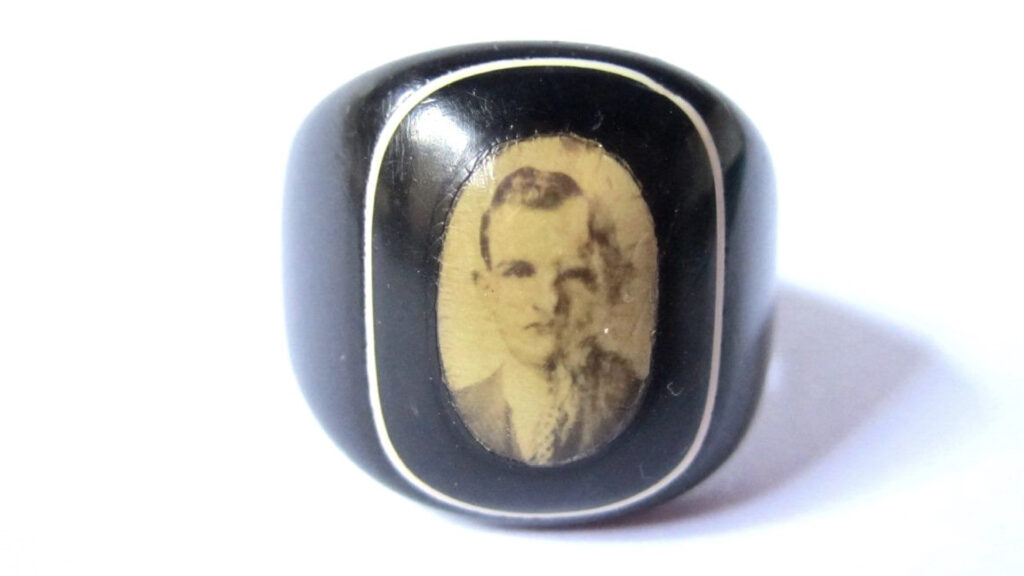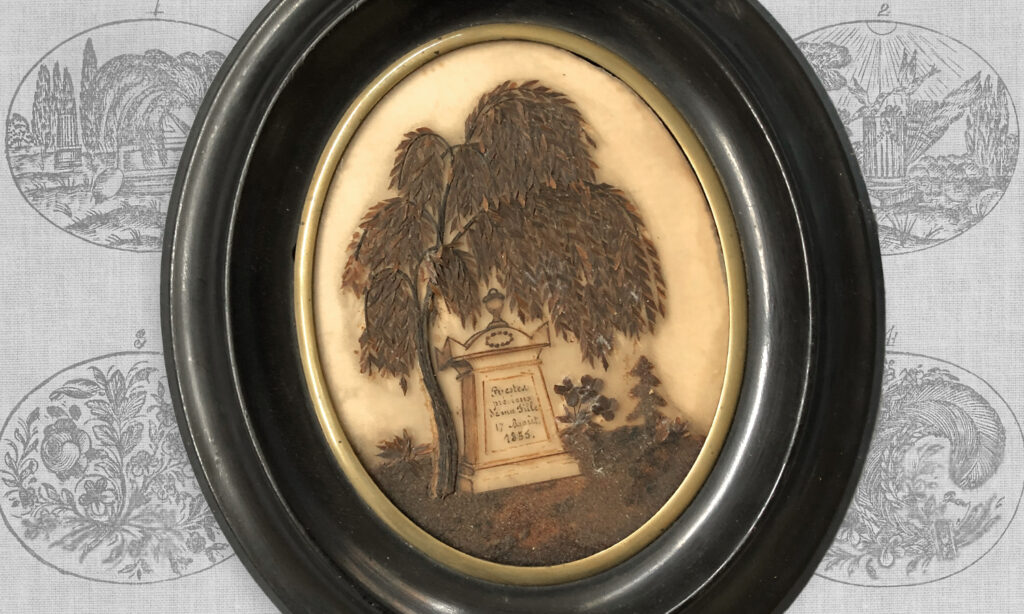A History of Hair Weaving, Part 8
“(Old styles) gave the appearance of having been designed from a ‘mortuary tablet’. Have we not all met ladies wearing as a brooch, by way of loving remembrance, a tomb between two willow trees formed of the hair of the individual from whom their crêpe was worn, and which from its very nature must be laid aside with it? But the new hair jewelry made by Limmonièr is an ornament for all times and places. He expands it into a broad ribbon as a bracelet and fastens it with a forget-me-not in turquoise and brilliants; weaves it into chains for the neck, the flacon, or the fan; makes it into a medallion, or leaves and flowers; and of these last the most beautiful specimens I have seen have been formed of the saintly white hair of age. This he converts into orange flowers, white roses, chrysanthemum and most charming of all, clusters of lily-of-the-valley.”

La Belle Assemblè provides a very good advertising spiel for Limmonièr but also provides an insight into how the French perceived hairwork in 1858. By the latter half of the 19th century, hairwork was nearing a phase of unpopularity in France, though this article shows how hairwork was removed, or was attempted to be removed, from mourning and memorials. The article ridicules prior styles of hairwork, as being designed from a “mortuary tablet”, and the stale nature of the depictions of hairwork. By 1858, many of these symbols were not being heavily used in mainstream mourning jewellery, being widely used in the late 18th century / early 19th century with the popularity of neo-classical art. However, the point is made, that hairwork is a beautiful material when combined with Limmonièr’s artistry.






